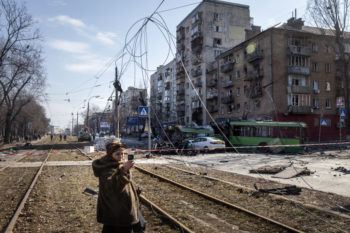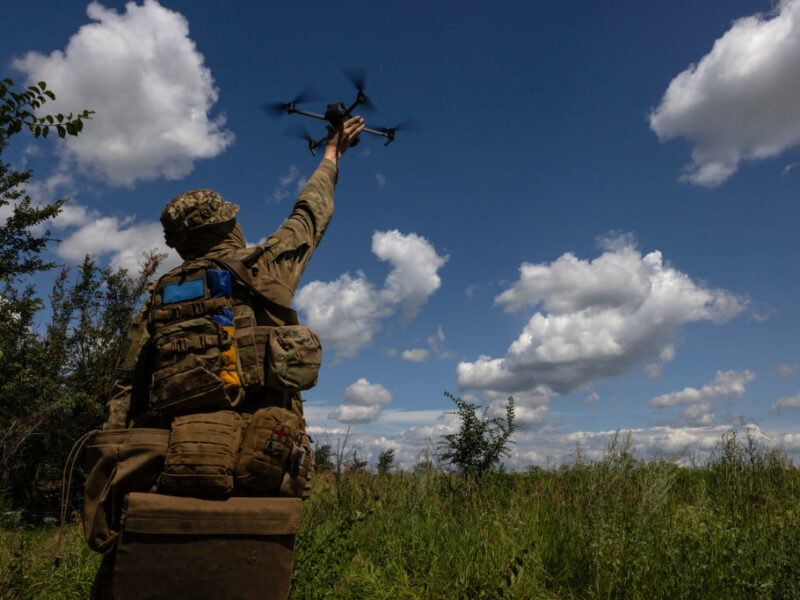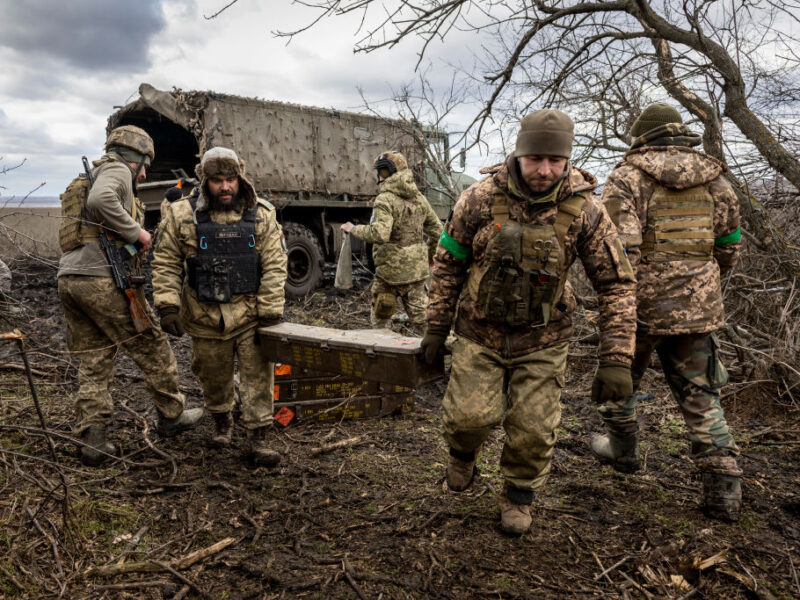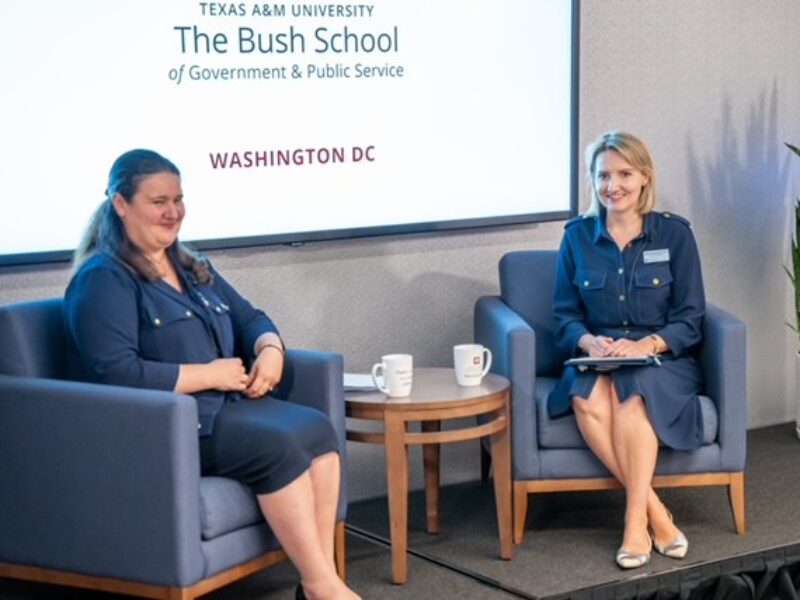What’s Next For Ukraine? Ambassador William Taylor Lays Out Three Scenarios

As the world watches Russian President Vladimir Putin’s next moves in Ukraine, a former ambassador to the country offered a variety of scenarios for the weeks ahead during a virtual discussion last week hosted by Texas A&M University’s Scowcroft Institute of International Affairs.
William B. Taylor, a former senior U.S. career diplomat, served as ambassador to Ukraine from 2006 to 2009. Previously in his career, Taylor was coordinator of U.S. assistance to the former Soviet Union and Eastern Europe.
“Ukraine is on the front lines, not by choice, but the Russians have brought this unprovoked war. It’s defending itself, and it’s also defending Europe, in some sense,” Taylor said. “The Russians want a sphere of influence that starts with Ukraine, and it doesn’t stop in Ukraine.”
For this reason, he said, it’s important that Ukraine succeeds. NATO and Europe are unified “in their hatred for Putin,” whose ultimate goal, Taylor said, is likely to reestablish the Soviet Union or the Russian empire, starting with the domination of Ukraine. “It’s an important fight, and I believe that we should support them,” he said.
Taylor sketched out the status of Russian troops assembled at Ukraine’s borders. Taking control of Kyiv is the goal of the military action, Taylor said, with Russian forces approaching from multiple directions.
When he returned to Ukraine in 2019 as acting ambassador, Taylor met with President Volodymyr Zelenskyy, who had just been elected “overwhelmingly.” Zelenskyy has emerged as a national hero in Ukraine, Taylor said, and has unified the country and Ukrainian military through his “bravery and in his courage to stay in Kyiv” as Russian forces continue to attack the city.
Militarily, the odds are still 100-to-one in Russia’s favor in terms of numbers, weapons, budget and many other measures, Taylor said. The original expectation for the David-versus-Goliath battle was that Russian forces would overwhelm Kyiv within a day or two, he said. But Ukrainian forces have managed to stall Russia’s advance on several fronts.
“The Ukrainian military is tough… they’re really committed to defending their land, and they’re defending their freedom, literally,” Taylor said. “They’ve got that motivation.”
He said sooner than later, though, Kyiv will be overwhelmed, and then it will be “decision time.”
Taylor presented three possible scenarios for how the conflict could play out.
In the first, Russian troops will finally overwhelm the Ukrainian military and take Kyiv, either by starving citizens of supplies, preventing people from evacuating, or continuing airstrikes as they did in Aleppo in 2016. In this scenario, Putin would take over “one way or another” and, in the worst case, would put a puppet regime in place. Taylor said Ukrainians would reject this, as they already have two other times in the past two decades.
“They will stay in the streets and they will shut the place down,” he said. “If (Russia) thinks they’re going to occupy the country and suppress all of this protest, they don’t have the military or the soldiers to do that.”
A more optimistic scenario would have the Ukrainian military managing to hold off the Russian forces or, in some cases, push them back. Officials in the Kremlin, feeling that Putin is not making rational decisions, could also conclude that “we could do it better,” he said. A negotiation or settlement could be prompted by such a change in Moscow, or in combination with the success of the Ukrainian military.
The last option Taylor predicted is one in which Zelenskyy is forced to leave Kyiv and the Ukrainian government is moved to a location where Russian troops have yet to reach, such as the mountainous region in the southwest.
“That government (would be) a legitimate government that the world recognizes, and we will continue to support it, provide weapons, funding, security, and political support,” he said. This democracy could join NATO and the European Union. Comparing it to the division of Germany during the Cold War, he said the tens of millions of Ukrainians taking to the streets under the first scenario would continue to resist in Russian-occupied regions.
Currently, there’s not much support for Putin among his citizens, either, Taylor said.
The growing number of protests and arrests in Russia are a sign that “by and large” the citizens of Russia are not in support of the war, he said. Putin has not been able to give a justification for the unprovoked attacks, Taylor said, and Russian families are “going to ask ‘why'” as more of their soldiers die and the economy is hammered by economic sanctions.
“The Russian people are suffering because of what President Putin is doing,” Taylor said. “He’s paying that price.”
Media contact: Caitlin Clark, caitlinclark@tamu.edu





